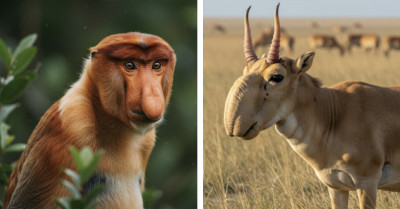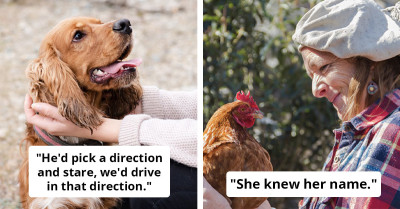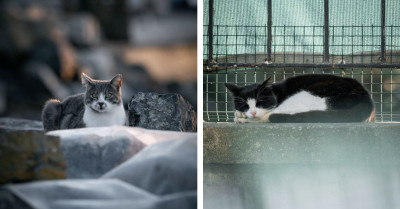14 Unique Cat Breeds That You Don’t See Every Day
Embark on a journey through the fascinating world of cats and explore the diversity of feline companionship like never before. In this curated collection, we unveil fourteen extraordinary cat breeds that stand out for their distinctive characteristics, captivating appearances, and unique personalities.
From the exotic to the obscure, these rare breeds promise to intrigue and enchant even the most seasoned cat enthusiasts. So prepare to be dazzled as we shine a spotlight on these lesser-known feline gems that are sure to leave a lasting impression!
1. Norwegian Forest cat

The Norwegian Forest cat boasts a stunningly long and dense fur coat, making it well-equipped to thrive in icy environments. Despite facing near extinction during the mid-twentieth century, a dedicated breeding program intervened, successfully bolstering their population.
Today, this robust and sizable feline has gained popularity in countries like Norway, Sweden, and France. With its elongated legs and impressive stature, the Norwegian Forest cat can live up to 16 years, showcasing both strength and longevity.
Nevertheless, prospective owners should remain vigilant for potential health concerns, particularly related to kidney and heart issues, which have become increasingly prevalent within this breed. Keeping a watchful eye on their well-being can ensure these magnificent cats lead long, healthy lives.
2. Himalayan cat

The Colorpoint Persian, also known as the Himalayan, bears a striking resemblance to the Persian breed but stands out with its captivating blue eyes and colorpoint coloring—a light-toned body contrasting with darker points on the face, feet, ears, and tail. With a slightly rounded body and short legs, these cats may not leap as high as their counterparts, distinguishing them further in appearance and movement.
Two distinct variations of this breed exist: the doll-face and peke-faced, the latter characterized by a more compressed facial structure. Originating in the United States around 1950, Himalayans have garnered a reputation for their gentle, obedient nature and amiable disposition.
While their fur typically adorns shades of white, they can also sport a spectrum of colors, including black, blue, lilac, chocolate, and red. Notably, producing chocolate and lilac Himalayans poses a greater challenge, as both parents must carry the recessive color gene, adding an element of rarity and complexity to their breeding.
3. Scottish Fold

Scottish Folds are renowned for their adorable ears that defy the norm by hanging down rather than standing upright, a unique trait stemming from a genetic mutation. But it's not just their distinctive appearance that sets them apart.
These feline companions are also known for their remarkable intelligence and sociable nature, effortlessly blending in with their human family members and always eager to engage in play. Another intriguing characteristic of Scottish Folds is their ability to stand on their hind legs, offering them a unique perspective as they curiously observe the world around them.
4. Peterbald

Peterbalds, also known as the Petersburg Sphynx, exude elegance with their slender bodies, elongated heads, and strikingly large ears. Their unique charm extends to their coat, which can range from completely bald to fuzzy.
Renowned for their sociable nature and gentle temperament, Peterbalds are easily trainable companions. While some are born bald or with a straight coat, others may sport a lush fur that they eventually shed over time, revealing their bald or fuzzy skin. Available in a plethora of colors, these feline beauties boast a diverse palette.
Their personalities are as varied as their appearances, characterized by sweetness, affection, tranquility, curiosity, intelligence, and boundless energy. They thrive on companionship and enjoy spending ample time with their owners, often forming close bonds. Peterbalds typically harmonize well with other pets and are known for their affinity toward children, making them cherished members of any household.
5. Egyptian Mau

The Egyptian Mau cat has retained its distinctive appearance virtually unchanged for over 3,000 years since its origins in Ancient Egypt. Not only do they boast a coat adorned with spots, but their skin also bears these characteristic markings. With a somewhat muscular build and longer hind legs compared to the front, they exude an elegant, tip-toed stance when standing upright. Renowned for their remarkable speed, they outpace other domestic cat breeds, further enhancing their regal allure.
Available in four captivating colors—silver, bronze, black, and blue—the Egyptian Mau cat embodies a spectrum of beauty. In terms of temperament, they exhibit unwavering loyalty, playful exuberance, and a friendly disposition, thriving in warm temperatures. Their unique vocalizations, resembling bird chirps, accompany their penchant for marking territory by wiggling their tails. Notably, the color of their expressive eyes can vary between green and bluish hues, reflecting their emotional state.
6. Maine Coon

The Maine Coon earns its distinction as one of the largest cat breeds, with adults weighing anywhere from 11 pounds to an impressive 33 pounds (5 kilograms to 15 kilograms). Their substantial size is further accentuated by bodies that can stretch up to 4 feet (1.23 meters) in length.
However, beneath their imposing exterior, Maine Coons reveal themselves to be affectionate, gentle, and endlessly playful companions. Despite their formidable presence, these majestic cats are beloved for their amiable nature and boundless charm.
7. LaPerm

LaPerm cats stand out as one of the most unique breeds, emerging in the 1980s in the United States. Their distinctive curly fur sets them apart, contributing to minimal shedding—a boon for cat parents who suffer from respiratory allergies.
8. Archangel Blue

The Archangel Blue, one of the most popular shorthair cat breeds, gained worldwide recognition in the late nineteenth century. Sporting striking green eyes and a uniform blue coat, these felines possess a double coat that is exceptionally thick and luxuriously soft to the touch. While their tails may feature stripes, these markings often blend into the overall coloration, lending them a somewhat subdued appearance.
Renowned for their inquisitive nature, friendly demeanor, and keen intelligence, Archangel Blues exhibit a reserved yet affectionate disposition. They possess a remarkable ability to engage in activities such as playing fetch and even opening doors, showcasing their problem-solving skills. Sensing the emotions of their human companions, they remain deeply loyal and devoted to both owners and fellow household pets.
Though they may initially shy away from strangers, Archangel Blues are proficient hunters and retain a playful spirit. To ward off boredom, they require ample toys and playmates to keep them entertained. Known for their exceptional memory, these cats have been observed hiding toys around the house and later leading their owners to these secret stashes when seeking playtime. Impressively, they can recognize familiar faces and warmly greet them, even after prolonged periods of separation.
9.

The Toyger, a sizable cat breed, bears a striking resemblance to a tiger, particularly in its distinctive coat pattern, which inspired its name. According to the breed's founder, the Toyger was intentionally developed to raise awareness about tiger conservation in the wild, serving as a reminder of the majestic beauty and importance of preserving these magnificent creatures in their natural habitats.
10. American Curl

Developed in the United States during the 1980s, the American Curl is a breed that captivates hearts with its distinctive trait: ears that gracefully curl backward, resembling tiny horns. While newborn kittens may initially appear similar to full-grown cats, their unique ear curling phenomenon begins to manifest as early as their tenth day of life. This endearing feature has endeared the American Curl to cat enthusiasts worldwide, making it a cherished and distinctive breed.
11. Bengal cat

Bengals are the offspring of a cross between an Asian leopard cat and a domestic cat. Renowned for their love of swimming, these cats exhibit an impressive size, ranging from 8.8 pounds to 17.6 pounds. Despite their substantial build, Bengals are known to display a playful and affectionate nature, often delighting their owners by climbing onto their shoulders.
12. Khaomanee

The Khaomanee breed traces its roots back to ancient times, with the earliest references found in the Tamra Maew, or Cat Book Poems (1350-1767). Revered in ancient Siam, Khaomanees were exclusively kept by royal families, symbolizing luck, longevity, and wealth. Known for their inquisitive nature, loyalty, and intelligence, Khaomanees delight in playing fetch and are devoted companions, often curling up with their owners in a cozy, warm bed for a nap.
13. Chausie

The Chausie stands out as one of the rarest cat breeds, originating from a cross between a domestic cat and a jungle cat. Highly sociable creatures, they struggle with loneliness and thrive in the company of others. However, their adaptable nature means they happily embrace companionship from humans, fellow felines, or even canines, making them versatile and affable pets.
14. Savannah cat

The Savannah cat, a breed created by crossing an African Serval with a domestic cat, holds the title as the largest domesticated cat breed. With an average weight of 33 pounds and standing at 1.9 feet in height, these majestic felines command attention. Renowned for their exceptional intelligence, calm demeanor, insatiable curiosity, and playful disposition, Savannah cats captivate their owners with their endearing traits.
They delight in activities such as taking baths, exploring the outdoors on walks, and engaging in various games that stimulate their agile minds and bodies. However, to provide the optimal environment for such a magnificent companion, ample space for play and exploration is essential.




